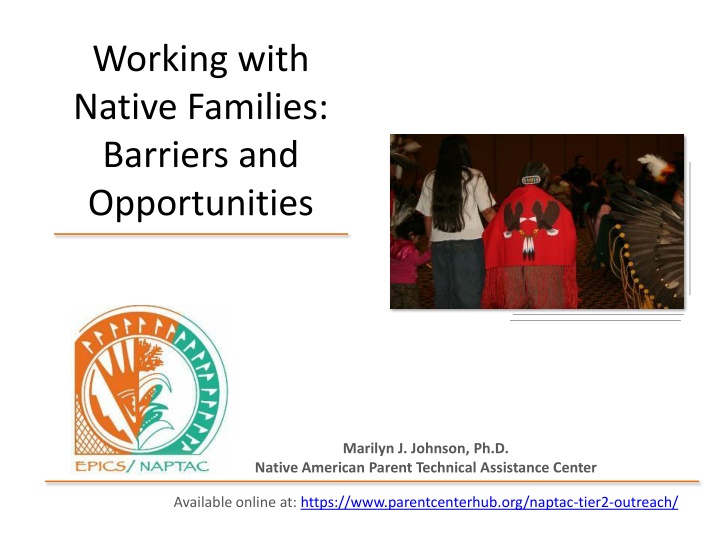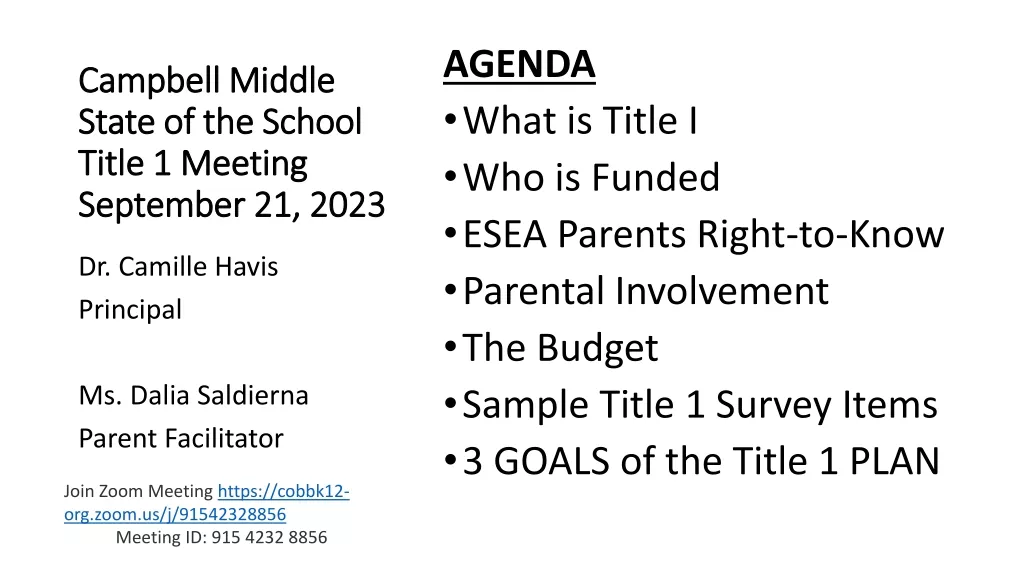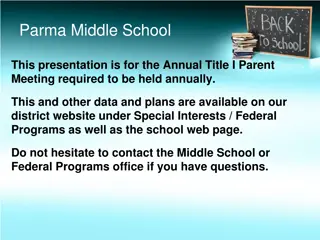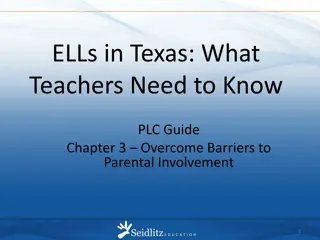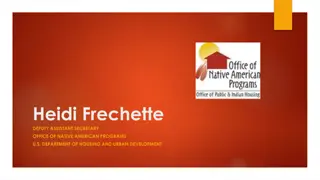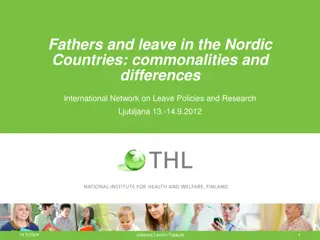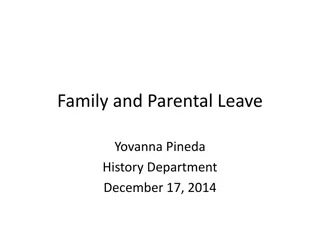Insight into Native American Parental Involvement in Education
Explore the impact of parental involvement on student achievement, early educational experiences of Native American parents, and present-day challenges and opportunities. Discover the benefits of family engagement, resources for connecting with Native American parents, and firsthand accounts highlighting the importance of communication between teachers and families.
Download Presentation

Please find below an Image/Link to download the presentation.
The content on the website is provided AS IS for your information and personal use only. It may not be sold, licensed, or shared on other websites without obtaining consent from the author.If you encounter any issues during the download, it is possible that the publisher has removed the file from their server.
You are allowed to download the files provided on this website for personal or commercial use, subject to the condition that they are used lawfully. All files are the property of their respective owners.
The content on the website is provided AS IS for your information and personal use only. It may not be sold, licensed, or shared on other websites without obtaining consent from the author.
E N D
Presentation Transcript
Working with Native Families: Barriers and Opportunities Marilyn J. Johnson, Ph.D. Native American Parent Technical Assistance Center Available online at: https://www.parentcenterhub.org/naptac-tier2-outreach/
Overview of Presentation How parent involvement impacts student achievement Early educational experiences of Native American parents And now? Present-day educational experiences of Native American parents Benefits of family engagement Connecting with Native American parents Resources
Parent Involvement Impacts Student Achievement Research indicates that parent involvement is a strong predictor of student success in school Parent child relationship Home school partnership Parent support for learning outcomes
Before and After Student Photos Zuni students (c. 1880) and later with school uniforms Navajo student (c. 1882 & 1885)
Early Educational Experiences of Native American Parents Educated within the Native community Missionary-based schools (began in 1770s) Schools of the Bureau of Indian Affairs (BIA) (c. 1860) and boarding schools (1870s) Public schools (c. 1910)
Present Day Educational Experiences of Native American Parents Public schools And today? Bureau of Indian Education (BIE) schools Where are Native children being educated now? Parochial schools (e.g., Catholic schools) Private schools
Teachers should communicate so we can understand. Positive We didn t have the money to buy school pictures for our child. She took a picture of our child and printed a couple of pictures. Our child was so happy. That was really nice of the teacher to do that. My child s teacher welcomes us and talks to us. She s always glad to see us even at the grocery store. The parents had to help out for a class project. The teacher helped out too. We had fun and so did our children.
I try to get to the meetings, but I work late and they won t change the time. Negative I try to meet with my child s teacher, but she leaves as soon as the children leave. Isn t she interested in the children? We only see the teacher at report card time. But if I ask questions, she says she ll call me, but I never hear from her. I guess she s not really interested. The grading system is confusing. My child makes good grades on the tests (mostly B s), so why did he get a D at mid-term? It doesn t make sense.
Benefits of Parent & & Family Engagement Children attend school regularly Children and parents have positive attitudes about school Children are less likely to dropout and more likely to graduate from high school Children are less likely to engage in destructive behavior Children from diverse cultural backgrounds benefit when parents and professionals work together
Connecting with Native American Parents Acknowledge & &welcome parents Respect Parents Treat parents as partners Include parents in training and activities
Connecting with Native American Parents Reach out to parents Establish Trust Engage them in discussion about theirchildor child s interests Communicate with parents consistently and not only at parent conferences Connect with parents beyond school events (e.g., cultural and community events)
Connecting with Native American Parents Offer multiple ways to participate Support Participation Provide parents with tools to participate effectively, such as: definitions of terms Identify parent mentors data grades Check to make sure parents understand the info you ve provided how to navigate systems how to access resources
Connecting with Native American Parents Create a safe space where parents can share Promote Parent Engagement Ask parents for their input Offer trainings & support at times & places convenient to parents Provide basic resources parents need to attend meetings (e.g., childcare, transportation) Follow up!
Other Suggestions & & Observations Invest in parent outreach Learn about the history & culture of the Native communities you serve Learn and use the times & methods of communication preferred by parents Be persistent, consistent, & authentically engaged Listen to & learn from Native parents Learn together Provide training to your staff to support their work with Native families Train | support | advocate for Native parents
Thanks for attending this webinar. NAPTAC All of NAPTAC s products are available at the Center for Parent Information and Resources: https://www.parentcenterhub.org/ welcome-to-the-naptac-library/ Native American Parent Technical Assistance Center
